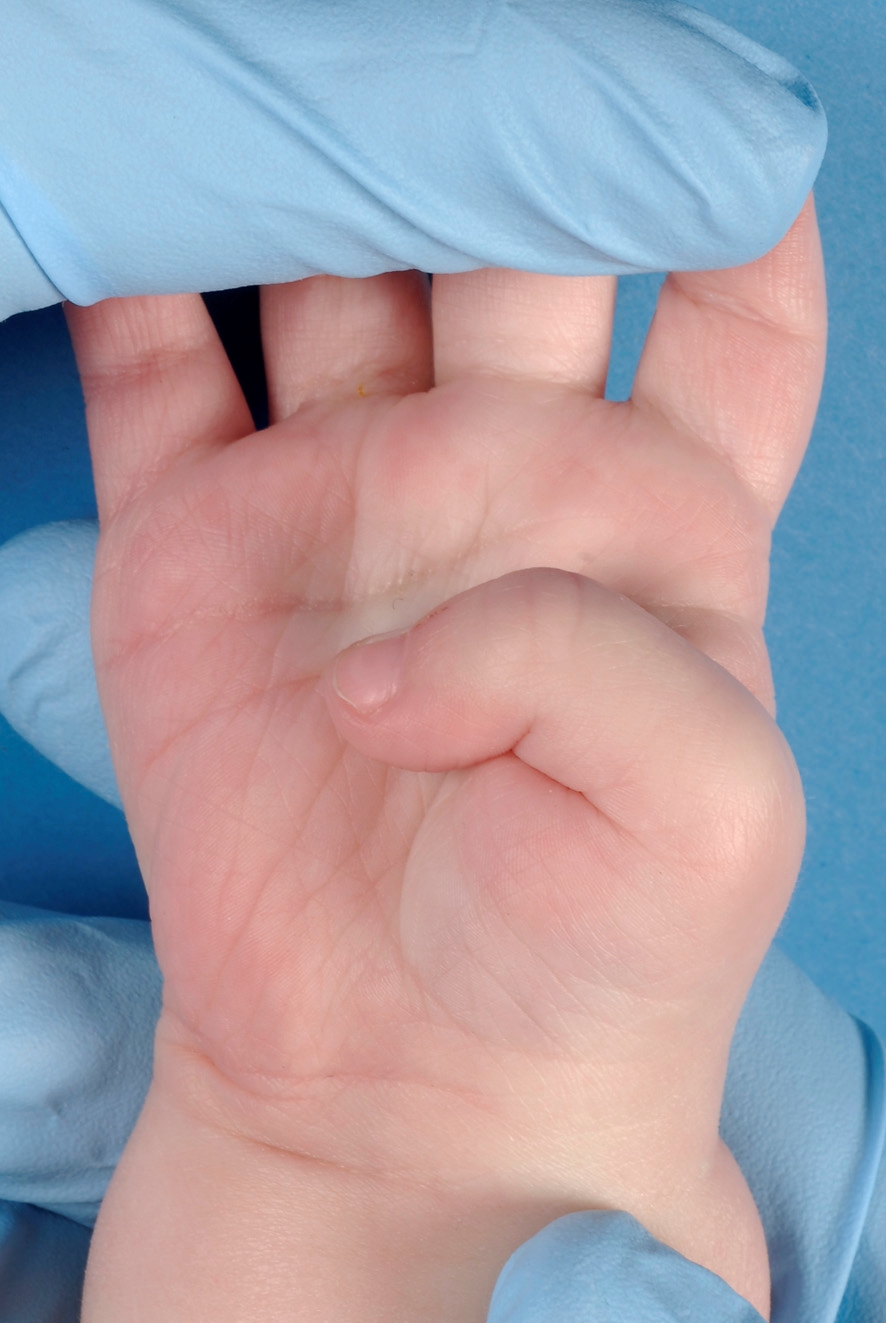Adducted Thumbs Syndrome

Clinical Features
Christian et al. (1971) described 3 sibships in an Amish kindred with members affected by a new syndrome, which they chose to designate the 'adducted thumbs syndrome.' All 6 parents shared a common ancestral couple. Three Amish children and an unrelated child had cleft palate, arthrogryposis, craniostenosis, swallowing difficulties, and microcephaly. Other features included prominent occiput, ophthalmoplegia, telecanthus, abnormal ear placement, and clubfeet. Neuropathologic study of 1 of the Amish patients, who died at 18 days of age, showed dysmyelination with excessive myelin-dependent gliosis, myelin solubilization, and transient formation of phospholipid-containing plaques on the surface of the brain during fixation in formalin.
Fitch and Levy (1975) reported a 4-year-old girl with adducted thumbs syndrome. Prominent features were microcephaly, prominent occiput, ophthalmoplegia, cleft palate, abnormal ears, hypertelorism, and pectus excavatum. The thumbs were flexed at the metacarpal-phalangeal joints only.
Anderson and Breed (1981) suggested that the Moro reflex may be a useful way to detect congenital clasped thumb early. The thumb normally extends during the Moro reflex.
Kunze et al. (1983) reported the case of a female with 'myopathic' stiff face, open mouth, high-arched palate, generalized muscular hypotonia, limited extension of the elbows, wrists, and knees, flexed adducted thumbs, velopharyngeal insufficiency, and hypertrichosis. Death occurred at 3 months from respiratory insufficiency. Muscle biopsy showed myopathic abnormalities.
InheritanceChristian et al. (1971) and Fitch and Levy (1975) suggested that adducted thumbs syndrome is an autosomal recessive disorder.